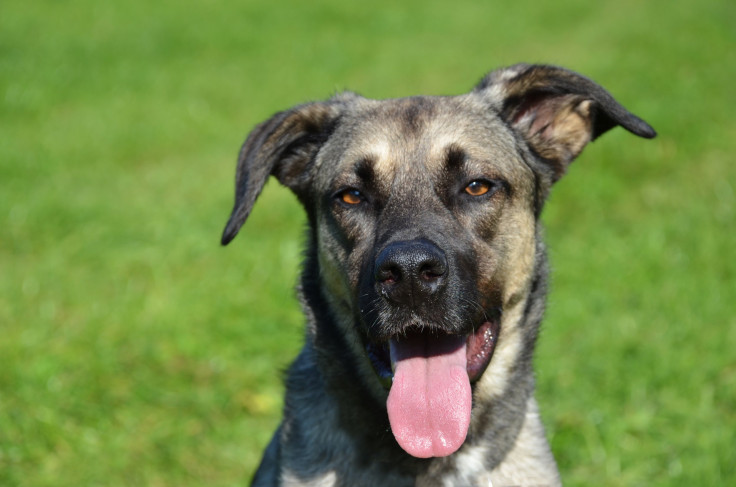Detecting Thyroid Cancer May Soon Involve A Dog's Nose; German Shepherd-Mix Sniffs Out Cancer With 88% Accuracy

Never underestimate a dog’s sense of smell; it’s their primary way of navigating the world. Their noses contain more than 220 million olfactory receptors, making their sense of smell thousands of times more sensitive than humans’ — humans only have five million of these cells. It’s these cells that give bloodhounds the ability to track, rescue dogs the ability to find people buried in rubble, and most recently, a German shepherd-mix the ability to detect thyroid cancer.
“Current diagnostic procedures for thyroid cancer often yield uncertain results, leading to recurrent medical procedures and a large number of thyroid surgeries performed unnecessarily,” said Dr. Donald Bodenner, chief of endocrine oncology at the University of Arkansas, Little Rock, in a press release. These procedures typically include detecting suspicious thyroid nodules — lumps that form in the thyroid, which are mostly benign — and then performing a fine-needle biopsy to collect and analyze the cells for malignancy. While it’s a simple procedure, it’s never completely accurate, and sometimes leads to additional biopsies, among other procedures that may be more painful or expensive.
Bodenner said the German shepherd-mix they trained to detect thyroid cancer could do so with only a bit less accuracy, but with the advantages of being inexpensive and noninvasive. The dog, named Frankie, was scent-trained to “differentiate benign thyroid disease from thyroid cancer by smelling a person’s urine,” co-author Dr. Arny Ferrando said in the release. The researchers’ study, which was presented Friday at ENDO 2015, the Endocrine Society’s 97th annual meeting, found Frankie was accurate 88.2 percent of the time.
For their study, 34 patients submitted urine samples prior to undergoing a biopsy or surgery to analyze suspicious nodules. Of them, 15 were diagnosed as cancer while 19 were considered benign thyroid disease. Next, the urine samples were presented to Frankie, who was trained to either lay down if the sample was cancerous or turn his head away if it was benign. His nose was able to match 30 of the 34 samples to their diagnostic outcome.
While there was only a small number of patients for Bodenner and his team’s study, the findings add to a growing body of research highlighting how dogs can contribute to the field of medicine. In 2012, a study found they were about 83 percent accurate when it came to identifying people infected with the superbug Clostridium difficile. Another study from 2011 found dogs could differentiate lung cancer from chronic obstructive pulmonary disease. “In the breath of patients with lung cancer, there are likely to be different chemicals to normal breath samples,” study author Thorsten Walles said at the time. It’s likely the urine of people with thyroid cancer also contains different chemicals than that from non-cancer patients.
Bodenner and his team plan to work with the Auburn University College of Veterinary Medicine in Auburn, Ark., next to train two bomb-sniffing dogs to identify thyroid cancer. Although the research is still in its early stages, it could lead to new, cheaper, and less painful approaches to cancer diagnoses.
Source: Bodenner D, Ferrando A, et al. At ENDO 2015. 2015.



























